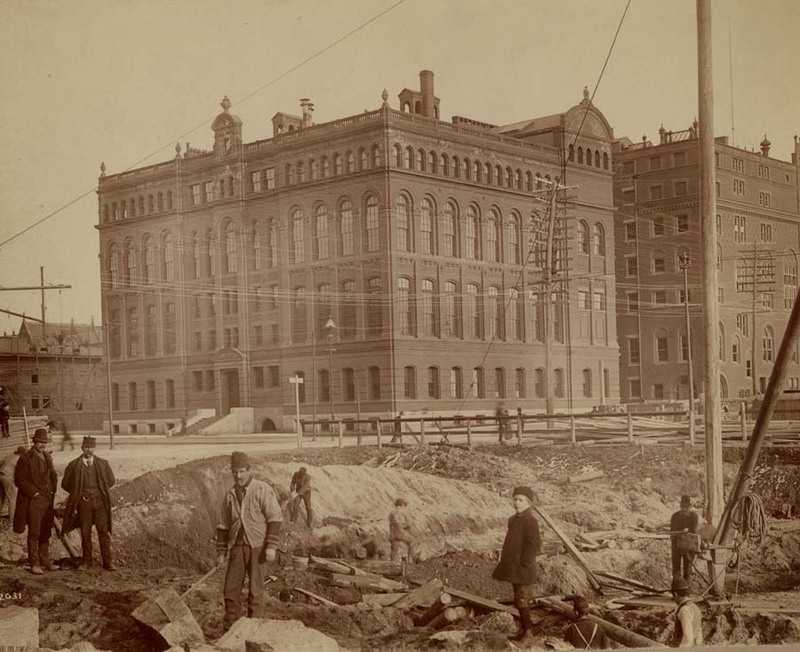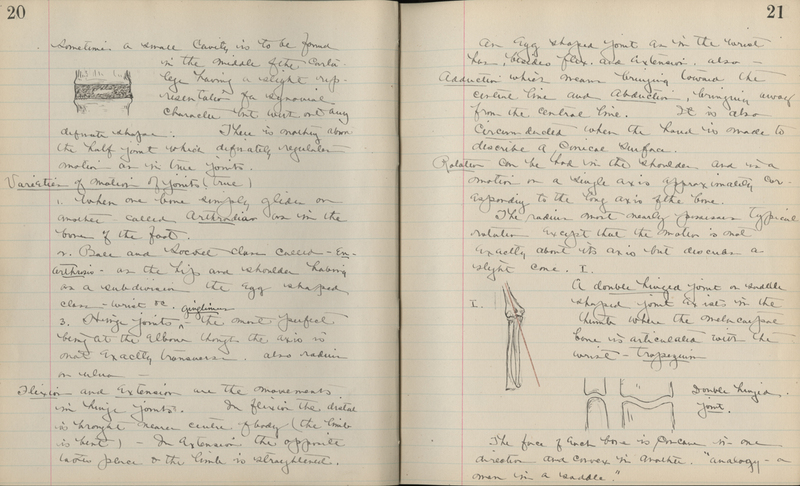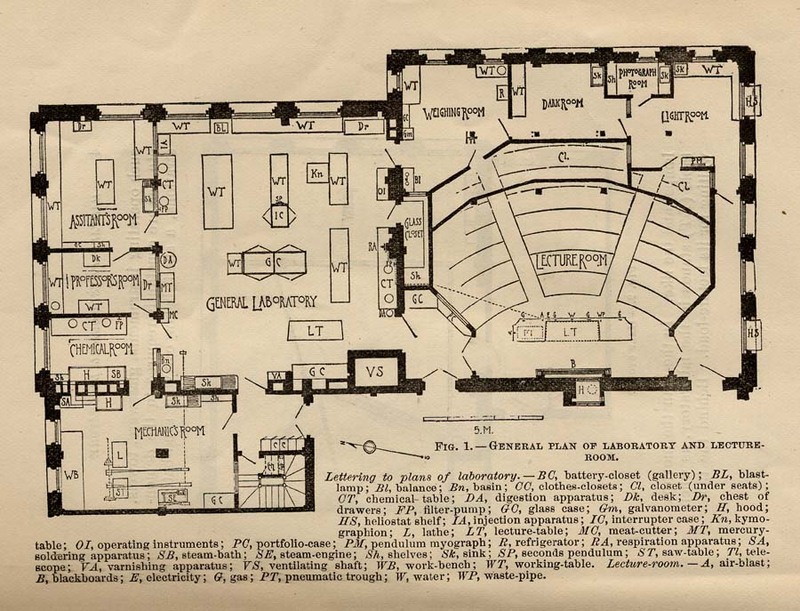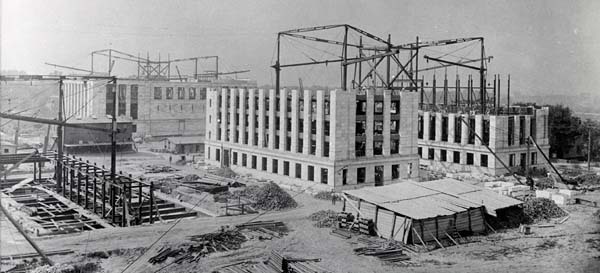The School on Boylston Street
Harvard's reformation in medical education took physical expression in the Medical School's construction of a new building, at 688 Boylston Street, which opened in the fall of 1883. The North Grove Street building housed the school for nearly forty years and had to accommodate the changes in class size, the demand for more laboratory space, and the growth of the Warren Anatomical Museum. The danger of a catastrophic fire was also an ongoing great concern. Even by the mid-1870s there were plans for a new facility. The Boston Medical and Surgical Journal supported the concept in an 1874 editorial, stating, "The building is entirely inadequate: every available inch has been converted into laboratories, and more are required…. Give it but the means, and the Harvard School will be the great medical educational centre of America." Acquiring funding for the new facility was, of course, the difficulty, and it took nearly a decade to acquire the $300,000 needed for construction.
This photograph was taken on the occasion of Dr. Oliver Wendell Holmes’ retirement from teaching anatomy at Harvard and just after the dedication of the new facility on Boylston Street. At the celebration of the Medical School’s centennial a few weeks earlier, Dr. Holmes said, “During the long period in which I have been a Professor of Anatomy in this Medical School, I have had abundant opportunities of knowing the zeal, the industry, the intelligence, the good order and propriety, with which this practical department has been carried on. The labors superintended by the Demonstrator and his assistants are in their nature repulsive, and not free from risk of disease…. The student is breathing an air which unused senses would find insufferable. He has tasks to perform which the chambermaid and the stable-boy would shrink from undertaking…. But we know that the great painters, Michael Angelo, Leonardo, Raphael, must have witnessed many careful dissections, and what they endured for art our students can endure for science and humanity.”
As the school moved into its new quarters at Boylston and Exeter Streets, in the fall of 1883, a new dean, Henry Pickering Bowditch (1840-1911), also took office and led the Medical School into its second century. Bowditch was principally concerned with the research aspects of medicine rather than the medical or surgical treatment of patients, and the Boylston Street facility with its five separate laboratories mirrored Bowditch's interests. The faculty and curriculum also began to change. Harvard became the first American medical school to offer instruction in pathology and bacteriology, and embryology began to be taught in conjunction with histology. The size of the student body began to increase as well. While there were just 270 students in 1889, there were over 500 students in four classes in the mid-1890s, and nearly 600 by the turn of the century. The size of the Faculty of Medicine also increased as new courses and subjects were offered. There were 22 full, assistant, or associate professors in 1889, along with 30 lecturers, demonstrators, and assistants. By 1901, there were 36 faculty members and over 100 instructors, lecturers, and assistants in subject areas as diverse as laryngology, pediatrics, neuropathology, legal medicine, and pharmacology.
Even the most renowned of neurosurgeons was once a first-year medical student, as illustrated by this volume of Harvey Cushing's notes on the anatomical lectures of Thomas Dwight. The Harvard Medical School student at this period attended anatomy lectures four times each week, with additional hours devoted to practical anatomical dissection.
A large proportion of the new building on Boylston Street was devoted to laboratory space with adequate natural light. The Physiological Laboratory (“… intended to serve primarily as a laboratory of research, and secondarily as an adjunct to the lectures on physiology in the preparation of suitable apparatus and experiments”) was one of five new laboratory spaces for students in the facility. This description of the Physiological Laboratory and its equipment was originally published in Science.
While it was hailed at its dedication as a structure in which "many generations of medical students are to receive a large part of their instruction," the Boylston Street building would be outgrown in just twenty years, and the need for additional space drove the Medical School to make one more move.
After removal to the Longwood campus, the Harvard Medical School sold its building on Boylston Street, and the structure was later razed to make way for a new wing of the Boston Public Library. A block of marble survives from the Boylston Street building and is in the Harvard Medical Library collection at the Countway Library; additional pieces are set into the Lower Two North lobby floor of the Countway Library.






